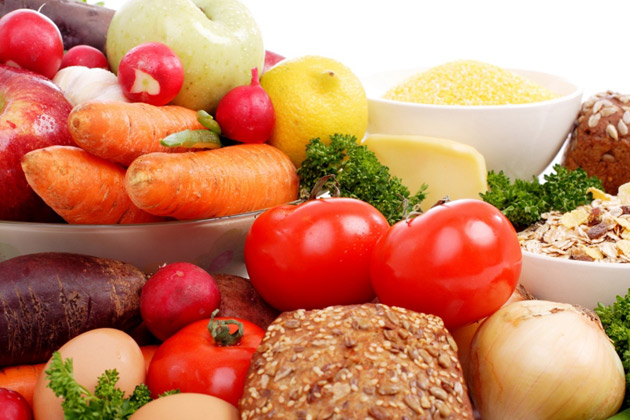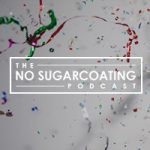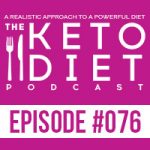I want...
The Affect Of Fiber On Your Health
January 3, 2011 By
Leanne Vogel

 March 11, 2016
March 11, 2016
 This topic is near and dear to my heart. For years; unbeknownst to me, I was consuming foods that were completely devoid of nutrients, fiber included. I was frequently in and out of the hospital with bouts of digestive pain and swelling, an experience I wouldn’t wish upon anyone. Doctors would recommend lactulose (a synthetic sugar derived from milk *allergen*), Metamucil (bulking agent containing gluten *allergen*), and prescription drugs, but nothing worked.
My symptoms got worse as time went on and I had no idea how to help myself. I was convinced that there was something physically wrong with me and was surely headed down the path of surgery if my symptoms had continued. After years of suffering with digestive upsets and sleepless nights I finally got to the bottom of it all when I began studying holistic nutrition. Fiber! And not the powdered stuff you buy in a plastic jar at your local grocery store, but the REAL fiber: fresh berries, flax, salba, ground nuts, and seeds.
Although my “recovery” is a lot more complex than just incorporating more fiber in my diet, it was a huge step in the right direction for me. I’ll continue to share my story throughout my posts on the ways I began healing my digestive system by incorporating certain foods, making tough lifestyle changes, and also just as important, changing my outlook on life. All these steps have played a key factor in my current health, but my health couldn’t be where it is today without the fiber I’ve learned to rely on.
This topic is near and dear to my heart. For years; unbeknownst to me, I was consuming foods that were completely devoid of nutrients, fiber included. I was frequently in and out of the hospital with bouts of digestive pain and swelling, an experience I wouldn’t wish upon anyone. Doctors would recommend lactulose (a synthetic sugar derived from milk *allergen*), Metamucil (bulking agent containing gluten *allergen*), and prescription drugs, but nothing worked.
My symptoms got worse as time went on and I had no idea how to help myself. I was convinced that there was something physically wrong with me and was surely headed down the path of surgery if my symptoms had continued. After years of suffering with digestive upsets and sleepless nights I finally got to the bottom of it all when I began studying holistic nutrition. Fiber! And not the powdered stuff you buy in a plastic jar at your local grocery store, but the REAL fiber: fresh berries, flax, salba, ground nuts, and seeds.
Although my “recovery” is a lot more complex than just incorporating more fiber in my diet, it was a huge step in the right direction for me. I’ll continue to share my story throughout my posts on the ways I began healing my digestive system by incorporating certain foods, making tough lifestyle changes, and also just as important, changing my outlook on life. All these steps have played a key factor in my current health, but my health couldn’t be where it is today without the fiber I’ve learned to rely on.
Digestion
So much of our nourishment depends on the healthy passage of food through our digestive tract. The key to maintaining this healthy passage is through the consumption of fiber, the structural support of all plant foods. Without the use of fiber in your daily routine, it is impossible for digestion to take place in a balanced way.What is fiber?
Fiber is made up of a complex combination of sugars; or carbohydrates, that have to undergo substantial digestion before they can be absorbed. There are two main components to dietary fiber: celluloses – insoluble fiber, and hemicelluloses – soluble fiber. Cellulose: is the main component in the walls of all plant cells making it particularly strong, hence insoluble. Cellulose is generally used as a bulking agent, serves as a fuel for friendly bacteria living in the lower part of the intestine, and controls our pH (acidity) in our intestines. Hemicellulose: unlike cellulose, hemicellulose is delicate and easy to break down which is why it referred to as soluble fiber. Hemicellulose supports our immune system, boosts detoxification, helps to balance blood sugar, and lowers our cholesterol.Blood sugar & fiber: digestion of carbohydrates
When we eat, our body converts carbohydrates into blood sugar (glucose), our main source of energy. Once the glucose enters our blood, our pancreas releases insulin to move the glucose from the blood through to our body’s cells where it is used for energy. The length of time it takes for our body to convert a carbohydrate to glucose is determined by the level of fiber paired with the carbohydrate.- The higher the fiber content, the slower the release of glucose. The slower the release of glucose, the less impact it will have on our blood sugar (this is a good thing – slow and steady wins the race)
- The lower the fiber content (refined grains), the harder the pancreas has to work to produce the insulin necessary to rid the blood of its excess sugar. This insulin surge tells our body that there’s plenty of energy available, but because not all of it can be used by our cells, it is stored (as glycogen) to be used at a later time. If these glycogen stores get “too full” we begin to gain weight.
Risk of a lower fiber diet
Living life with imbalanced digestion due to a lack of fiber welcomes the risk of poor nutrient absorption, compromised metabolism and inadequate health. Low-fiber diets are associated with:- Constipation
- Gastrointestinal disorders
- Colon cancer
- Inflammatory diseases
- Appendicitis
- Normalizing bowel movements
- Lowers blood cholesterol levels: assists in lowering your LDL cholesterol (or low-density lipoprotein) the bad cholesterol
- Controls blood sugar levels
- Aids in weight loss: feel fuller longer!
Best forms of fiber
Whenever we increase our intake of plants in comparison to animal foods, we are increasing our fiber intake. Whenever we head more towards an animal food diet, we are decreasing our dietary fiber. Here are some great foods we can begin to add to our diet to help with our fiber content:- Raw fruits
- Nuts & seeds
- Legumes (beans)
- High quality grains
- Flax & salba
Hi! I’m Leanne (RHN FBCS)
a Keto Nutritionist, host of The Keto Diet Podcast, and best-selling author of The Keto Diet & Keto for Women. I want to live in a world where every woman has access to knowledge to better her health.





